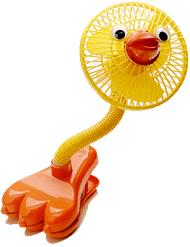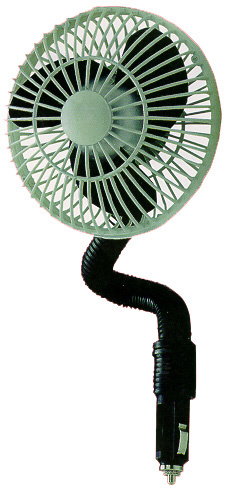|
answers to those doggone thermal design questions
by tony kordyban
dear mr. tony kordyban,
what's with the crack about pe's in your last column? (see eykiw part viii, "p.s. sorry, i couldn't think up a clever pseudonym. i thought having pe after my name was amusing enough.")
we have a hard enough time trying to convince people there's a difference between engineers and air conditioning repair technicians, without you dumping on our profession, too!
pe from peoria
dear pe,
sorry. i guess that was unprofessional of me. i suppose i should warn my readers that i am not licensed by any state to practice humor either.
hi tony,
[in regard to last month's column about mounting a thermocouple inside a blind hole in an aluminum plate] to check if a thermocouple is making good contact with a surface (such as in the "drill a hole and fill it with glue" scenario), attaching an ohm's meter across either lead of the thermocouple and the metal it is fed into will indicate a good or bad connection. zero or very low resistance reading is good contact, high reading or no reading is a poor contact. hope this helps.
regards,
les fisher
senior thermal and emc engineer
intel
dear les,
what a great idea! they always sound so obvious after someone else says them.
your idea would work especially well if you form the bead of the thermocouple as close to the insulation as possible. that way it should not make any electrical contact with the aluminum plate except at the junction.
p.s. - the name les fisher is real, not some lame attempt at a pun about "fishing a wire into a hole", so i don't want to hear any complaints from fishermen (fisherpersons? fishcatchers? fishers? -- you see the trouble you get into once you start apologizing for things?).
dear temperature helping guy,
i belong to a laptop computer hobbyist club. our hobby is figuring out how to make laptops do stuff they were never meant to. like in this picture, we crack open an old 486 laptop, upgrade the processor, duct tape the video display to the dashboard, stuff the keyboard section under the driver seat, and wire it up to the car stereo. presto! -- an mp3 player for the '73 vega!

the trouble is, half the time we crack open a laptop, the darn thing locks up, sometimes forever. the club members say it's a thermal thing. they have lots of wacky ideas for boosting the cooling. one guy says to bore a hole in the case and shoot co2 cartridges into it. can you give us a little bit more professional help?
overclocker from knickerbocker
dear over,
aaarrrggghhh!
that is the collective sound of all the engineers pulling out their hair (for me, what's left of it.) a team of engineers agonized for a year and a half, designing that laptop to meet conflicting design requirements. they babied it through the thermal tests, safety tests, electromagnetic interference (emi) tests, and performance tests, all the time trying to predict how the customer might reasonably use it.
and them some bozos buy it second-hand and decide to "crack open the case"?! there go safety and emi out the window. and once the chassis is disassembled, the jigsaw puzzle of heat transfer paths carefully designed into it is completely kaput. you destroy the end product of a multi-million dollar development effort just for kicks, and you want some "professional help"?
well, ok. sure.
compared to personal computer thermal engineers, i've got it easy, in one respect. in the telecom biz, where i work, the thermal environment is well-defined. in a us telephone central office, for example, the room air temperature is controlled between 0 and 50 degrees c. it's all spelled out in an industry standard published by telcordia. it even tells exactly how big the aisle space around my equipment will be.
but what is the industry standard for a lap? that's the nominal environment for a laptop computer, isn't it? i pity the engineer that has to cool a laptop, with such a vague definition of the operating environment. what is the maximum air temperature? what is the worst case air flow? how much of the surface area is in contact with air, and how much with the lap of the user? how hot do the user's legs get? with shorts on? or no shorts at all? and how hot can the laptop surface get before the lap gets uncomfortable? tv commercials show laptops in use at the beach. what is the worst case solar load?
somehow the laptop engineers decide what the reasonable worst case environment should be. then they design and test their computer to not overheat in it. i don't know how they do it, exactly, but i think the general cooling concept is that the whole chassis is a single heat sink, and sometimes there is a tiny fan to help out in peak temperature situations.
then you guys go not one, but a hundred steps farther than those engineers ever imagined. you bump up the processor performance and shove it under a car seat. your photo shows a laptop designer's nightmare thermal scenario -- you have placed the laptop on top of a bed. the whole bottom surface is literally blanketed with a conformal insulator. you took away 50% of the heat path surface area, and probably blocked any vent holes, too.
the same thing would probably happen under a car seat. the carpet (and the inevitable collection of fast food wrappers) under the driver seat would smother the heat transfer from the bottom of the chassis. the processor would likely overheat even if you didn't upgrade it. breaking open the case probably disrupted any heat transfer path out the top side or through the keyboard, so you are in for big thermal trouble.
although, again, i am not a professional engineer, even i am leery about getting involved in a project with such a huge chance for something seriously to go wrong. not just thermally. when you crack the case, you break the emi seal, and will probably interfere with radio and tv broadcasts (a federal offense). when you play with batteries, you risk burns, explosions, chemical poisoning, and environmental damage. there may be other toxic substances in there. i especially hope that the guy who wants to cool his laptop with co2 cartridges does not discharge them in his car with the windows rolled up. he could end up seriously suffocated (dead).
so my first recommendation is to get a new hobby (something safe, like watching food network on cable). but i know that my paternalistic warnings are not going to stop guys like you from tinkering. so i am going to give you some real thermal advice. just don't take that as an endorsement of what you are doing. everything you try, even my advice, is totally at your own risk.
here goes. preserve as much of the original cooling design as possible. those laptop engineers really did put a lot of thought into it. that means use the outside of the case, as intact as possible, as the heat sink for the processor. if you open the case to do an upgrade, close it back up just the way it was, if you can. if you put it under the car seat, attach some legs, maybe a half inch tall, to get the bottom of the case off the carpet. then blow air across the whole thing. run a dryer hose down from the air conditioning vent. or mount a fan nearby. here are some fans i recommend (not because i know they will work, but because they look hard to misuse, but i bet you'll find a way.)

this fan clips onto a baby's highchair.
how much trouble could an overclocker get into with this?

this one doesn't have the cute face, but it plugs into the car cigarette lighter,
so you don't have to duct tape it to a car battery.
i found these at great idea products (not yet a coolingzone supplier.) i suppose your club members would prefer to find some used ones on ebay.
if you think you can stand any more "professional" advice like this, feel free to come back.

about tony kordyban
tony kordyban has been an engineer in the field of electronics cooling for different telecom and power supply companies (who can keep track when they change names so frequently?) for the last 20 years. maybe that doesn't make him an expert in heat transfer theory, but it has certainly gained him a lot of experience in the ways not to cool electronics.
he does have some book-learnin', with a b.s. in mechanical engineering from the university of detroit and a master’s in mechanical engineering from stanford. in those 20 years tony has come to the conclusion that a lot of the common practices of electronics cooling are full of baloney. he has run into so much nonsense in the field that he has found it easier to just assume "everything you know is wrong" (from the comedy album by firesign theatre), and to question everything against the basic principles of heat transfer theory.
tony has been collecting case studies of the wrong way to cool electronics, using them to educate the cooling masses, applying humor as the sugar to help the medicine go down. these have been published recently by the asme press in a book called, "hot air rises and heat sinks: everything you know about cooling electronics is wrong." it is available at https://www.amazon.com/hot-air-rises-heat-sinks/dp/0791800741. this advice column is an extension of that educational effort.
|